
NGC 4881 is an elliptical galaxy in the northern constellation of Coma Berenices. It was discovered by the German astronomer Heinrich Louis d'Arrest on April 22, 1865. John L. E. Dreyer described it as "faint, small, a little extended, 9th magnitude star to southwest". This object is located at a distance of approximately 309 megalight-years from the Milky Way. It is a member of the Coma cluster of galaxies, positioned around 18′ to the north of the cluster's center with no nearby galactic neighbors.

NGC 27 is a spiral galaxy located in the constellation Andromeda. It was discovered on 3 August 1884 by Lewis Swift. It forms a galaxy pair with the nearby UGC 95.

NGC 4777 is an intermediate spiral ring galaxy. It is estimated to be about 180 million light-years away from the Sun. It was discovered on March 3, 1786 by the astronomer William Herschel.
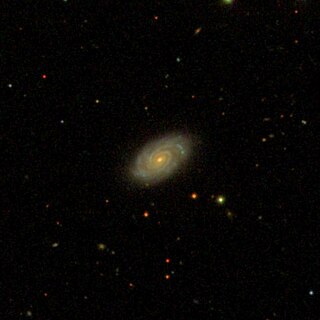
NGC 41 is a spiral galaxy located in the constellation Pegasus. It is located about 290 million light-years away from the Sun. It was discovered on October 30, 1864, by the astronomer Albert Marth.

NGC 62 is a barred spiral galaxy in the constellation Cetus. NGC 62 is its New General Catalogue designation. It has an apparent magnitude of 13.2.

NGC 63 is a spiral galaxy in the constellation Pisces. NGC 63 is its New General Catalogue designation. It has an apparent V-band magnitude of 12.70.
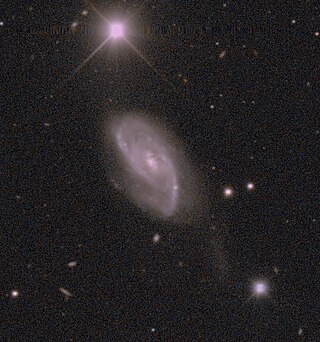
NGC 66 is a barred spiral galaxy discovered by Frank Muller in 1886, and is located in the Cetus constellation.

NGC 112 is a barred spiral galaxy located in the constellation Andromeda. It was discovered by American astronomer Lewis Swift on September 17, 1885. The galaxy lies approximately 295 million light-years from Earth, and is about 75,000 light-years in diameter.

NGC 120 is a lenticular galaxy of type SB0? pec? with an apparent magnitude of 13.4 located in the constellation Cetus. It was discovered on 27 September 1880 by Wilhelm Tempel.

NGC 127 is a lenticular galaxy that was discovered on November 4, 1850, by Bindon Stoney, the same day he discovered NGC 126 and NGC 130. NGC 127 is a gas-rich, star-forming galaxy showing emission lines. It is an interacting companion to the peculiar, edge-on galaxy NGC 128, and the pair are connected by a bridge of material. The south-east part of NGC 127 is asymmetrical in the direction of NGC 128. It may have recently passed the more massive NGC 128, from which an infall of gas is flowing onto NGC 127.

NGC 3001 is a magnitude 11.83 spiral galaxy in the constellation Antlia, discovered on 30 March 1835 by John Herschel. It has a recessional velocity of 2,465 kilometres (1,532 mi) per second, and is located around 115 million light years away. NGC 3001 has an apparent size of 4.3 by 3.1 arcminutes and is about 145 thousand light years across.
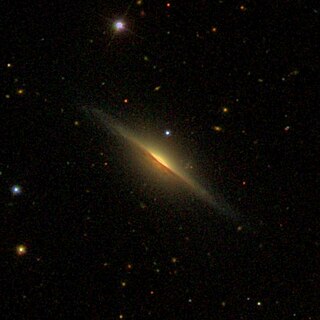
NGC 825 is an unbarred spiral galaxy in the constellation Cetus, estimated to be 154 million light-years away. The object was discovered by the astronomer Albert Marth on November 18, 1863.
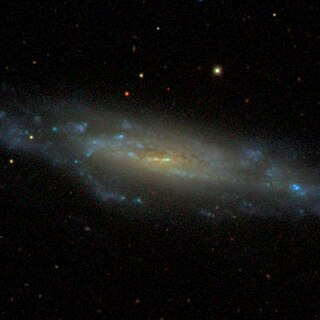
NGC 3003 is a nearly edge-on barred spiral galaxy in the constellation of Leo Minor, discovered by William Herschel on December 7, 1785. It has an apparent visual magnitude of 11.78, at a distance of 19.5 Mpc from the Sun. It has a recessional velocity of 1474 km/s.

NGC 938 is an elliptical galaxy located in the constellation Aries, approximately 184 million light years from the Milky Way. It was discovered by the Prussian astronomer Heinrich d'Arrest in 1863.
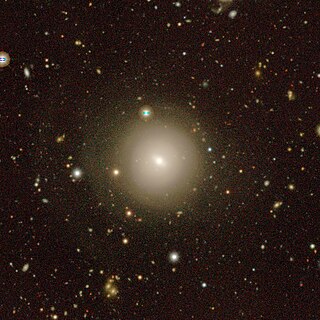
NGC 534 is a lenticular galaxy located in the constellation of Sculptor about 260 million light years from the Milky Way. It was discovered by the British astronomer John Herschel in 1835.

NGC 5533 is an unbarred spiral galaxy in the constellation Boötes. It was discovered by the astronomer William Herschel on May 1, 1785. It has a regular structure, with one tightly wound spiral; its disk is inclined about 53 degrees towards the line of sight.

NGC 3900 is a lenticular galaxy located in the Leo constellation. It was discovered by William Herschel in 1785. It is estimated to be about 95 to 100 light-years away from Earth.

NGC 4179 is a lenticular galaxy located in the constellation Virgo. It was discovered by William Herschel on January 14, 1784. It is a member of the NGC 4179 Group of galaxies, which is a member of the Virgo II Groups, a series of galaxies and galaxy clusters strung out from the southern edge of the Virgo Supercluster.
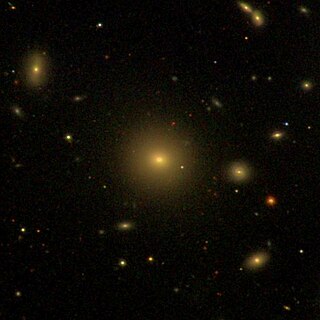
NGC 7503 is an elliptical galaxy in the constellation Pisces. It was discovered by the astronomer Albert Marth on September 2, 1864. It is the brightest galaxy in its cluster.

The Leo II Groups, or Leo II Cloud, are a series of at least 110 galactic clusters and individual galaxies stretching approximately 30 Mly off the right edge of the Virgo Supercluster. It is located approximately 65 Mly to 95 Mly from the Solar System, at a right ascension of 10h 00m to 11h 40m.





















